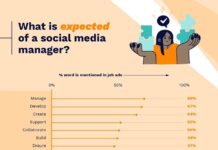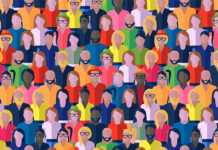Thanks to a small group of power users, the average Facebook user gets more than he or she gives.
According to a new study released by the Pew Internet & American Life Project, these power users represent between 20% and 30% of users depending on the type of activity, and they contribute far more than the typical user does. Because of them, the average Facebook user gets more friend requests and personal messages than they initiate, is tagged in photos more than they tag others, and receives feedback in terms of “likes” at a higher frequency than they contribute.
Interestingly, the researchers also found that power users tend to specialize, with about 43% being power users in at least one Facebook activity: sending friend requests, pressing the like button, sending private messages, or tagging friends in photos–but only 5% of Facebook users were power users on all of these activities, 9% on three, and 11% on two.
Your Facebook Friends Share More Than You Do
- On average, Facebook users get more friend requests than they make: 63% received at least one friend request during the period we studied, but only 40% made a friend request.
- Unless you’re one of the power users, you receive more “likes” than you like other users’ content: Users in the sample pressed the like button next to friends’ content an average of 14 times per month–and received feedback from friends in the form of a “like” 20 times per month.
- And users receive more messages than they send: over the month analyzed by Pew, users received an average of nearly 12 private messages, and sent nine.
The same types of findings apply to commenting and photo tagging, too.
Long-time Facebook Users Are More Active
Pew also found that, the more time that has passed since a user started using Facebook, the more frequently he/she makes status updates, uses the “like” button, comments on friends’ content, and tags friends in photos. And the more Facebook friends someone has, the more frequently they contribute all forms of Facebook content and the more friend requests they tend to send and accept. In other words, there’s no sign that users grow tired of Facebook overtime–in fact, the opposite is true.
Your Facebook Friends Have More Friends Than You Do
In this sample of Facebook users, the average person has 245 friends. However, the average friend of a person in this sample has 359 Facebook friends. The finding, that people’s friends have more friends than they do, was nearly universal (as it is for friendship networks off of Facebook). Only those in our sample who had among the 10% largest friends lists (over 780 friends) had friends who on average had smaller networks than their own.
Facebook Social Networks Are Less Dense Than Offline Networks
Not surprisingly, online social networks are less tigthly inter-connected than real-world relationships. A fully connected list of friends on Facebook would mean that everyone knows everyone else. The average Facebook user had 245 friends, and only 12% of the maximum 29,890 friendship linkages exist between those friends.
But this is what gives online networks there potential reach. Facebook users can reach an average of more than 150,000 other Facebook users through their Facebook friends; the median user can reach about 31,000 others. And at two degrees of separation (friends-of-friends), Facebook users in the sample can reach an average of 156,569 other Facebook users.
Once again, however, the Facebook power users skew the average. In the Pew sample, the maximum reach was 7,821,772 other Facebook users–but the median user can reach 31,170 people through their friends-of-friends.
Are you a power user?
And could brands be doing more to try and leverage these power users?


